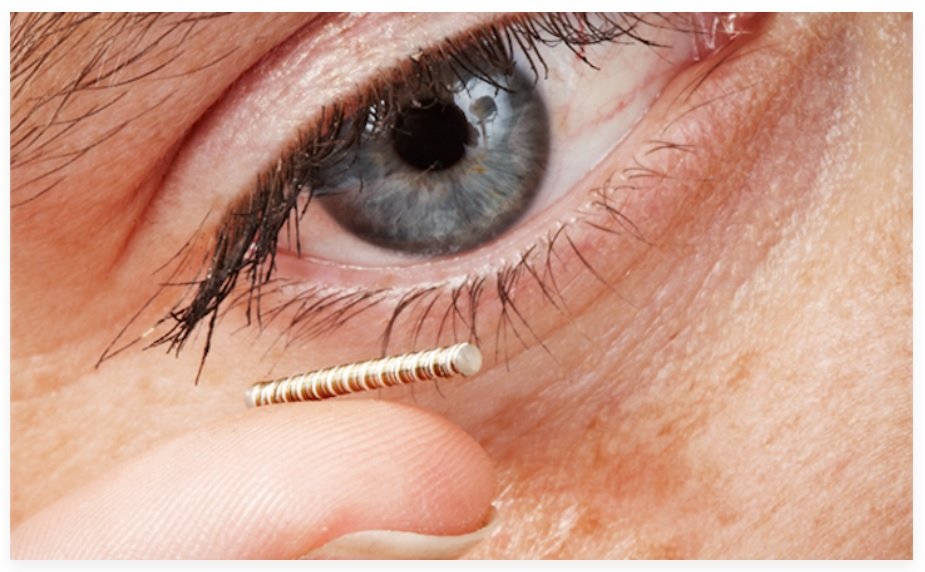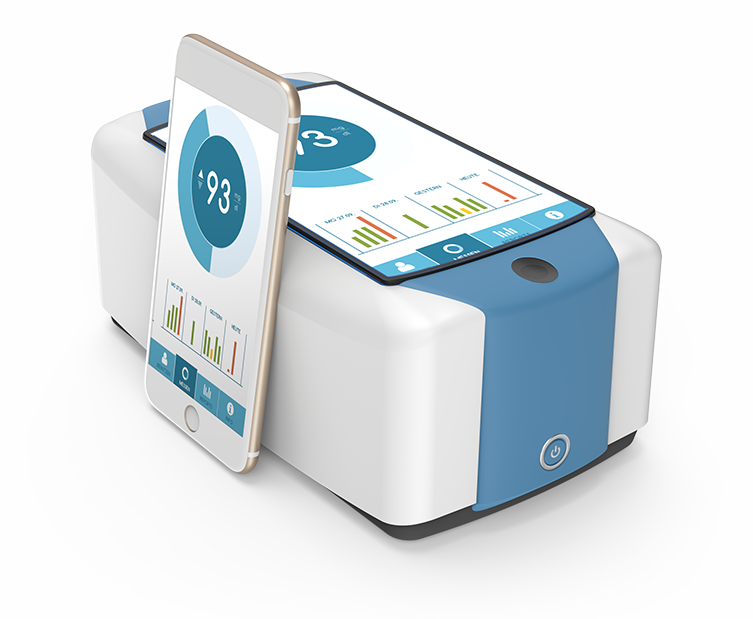1. Freestyle Libre
The FreeStyle Libre system measures glucose levels through a small sensor — the size of two stacked quarters — applied to the back of your upper arm. It provides real-time glucose readings for up to 10 days, both day and night. The sensor can also read glucose levels through clothes, making testing discreet and convenient.
The FreeStyle Libre system provides three critical pieces of data with each scan:
- A real-time glucose result.
- An eight-hour historical trend.
- A directional trend arrow showing where glucose levels are headed.
The touch-screen reader also holds up to 90 days of data, which allows people to track their glucose levels over time.
2. Everscense CGMs - P160048/S006
The Eversense Continuous Glucose Monitoring System is a prescription device that provides real-time glucose monitoring every five minutes for up to 90 days at a time for people with diabetes. The system consists of an implantable fluorescence-based sensor, a smart transmitter, and a mobile app for displaying glucose values, trends and alerts on the patient's compatible mobile device (smart phone, tablet, etc.).
This supplement expands the indications for the Eversense CGM system to allow for replacement of fingerstick blood glucose testing for diabetes treatment decisions.
3. NovioSense glucose monitor
Hidden under the lower eyelid, NovioSense’s glucose monitor could offer an invisible and affordable option to continuously monitor glucose levels.
The device consists of a flexible metal coil that is covered with a hydrogel layer. Inside the hydrogel there’s an enzyme, called glucose oxidase — the same one used in sugar blood tests. In the presence of glucose, this enzyme produces an electric signal that is picked up by a nanosensor in the metal coil. In the final design of the device, the company plans to add a microchip to wirelessly transfer the data to a smartphone.
4. Occuity indigo CMM
Indigo Diabetes’ continuous multi-metabolite monitoring (CMM) sensor is a small spectrometer-on-a-chip to monitor multiple metabolites in-vivo simultaneously and continuously.
The inert, miniature integrated silicon photonics spectrometer chip measures the absorption of light in the interstitial fluid to quantify the concentration of multiple metabolites simultaneously without the use of enzymes or fluorophores.
Once inserted under the skin, the CMM sensor is invisible to the naked eye and will connect securely and wirelessly to mobile devices via Bluetooth to share the concentration profiles of the user’s metabolites with their caregivers and family members. A rechargeable sensor battery powers the measurements.
It is expected that the sensor will have a lifetime of up to two years. Preclinical studies have successfully demonstrated proof of concept with promising accuracy.
5. D-Base
diabetes centers). The measuring instrument received the CE-certification in March this year. The handling is simple: the user places his finger on a sensor field for a few seconds and the blood glucose level is shown on a display. The blood sugar can thus be measured precisely and painlessly without a drop of blood. The measurement can be made as often as desired without consumables (test strips). The need to prick several times a day is therefore completely omitted.6. Dexon G6
The G6 CGM System allows users to see their glucose data using a water-resistant sensor.People use the auto-applicator to insert a sensor just beneath the skin. Individuals can reportedly place the sensor on the following body areas:
- Upper buttocks: According to the company, this area is suitable for children who are 2–17 years old.
- Back of the upper arm: The company states this area may be more suitable for people whom are active. This placement is appropriate for those over the age of 2 years.
- Abdomen: Dexcom suggests the sensor is more discreet if individuals place it on the abdomen. This placement is suitable for individuals aged 2 years and above.
People need to replace the G6 sensor every 10 days. The sensor sends data wirelessly to a compatible iOS or Android smart device through a transmitter.
7. GlucoTrack
The GlucoTrack DF-F model is a high-tech earlobe clip that measures glucose using three kinds of technologies: ultrasound, electromagnetic, and thermal. You just clip the GlucoTrack sensor onto your earlobe and within a minute, it sends your BG data through a headphone-style cord to a smartphone-sized handheld controller. And that’s where the glucose reading is displayed or even verbally announced
8. glucoWISE
glucoWISE is envisioned to be a non-invasive, 100% pain-free device. Its unique sensor technology will allow you to monitor blood glucose levels multiple times without the need to pierce your skin. App and Smart Cloud technology will deliver personalized advice and alerts, helping you to fully manage your condition. Intelligent analytics will use your current and historical data to calculate and forecast immediate trends in your blood glucose levels, allowing you to adjust your food or medication intake according to your activities or how you are feeling.
9. sugarBEAT
SugarBEAT is a skin patch unlike any other CGM on the market. According to the company, it works by “passing a mild, non-perceptible electric current across the skin, (which) draws a small amount of selected molecules, such as glucose, into a patch placed on the skin. These molecules are drawn out of the interstitial fluid which naturally sits just below the top layer of skin.”
10. Medtronic's Gaurdian connect system
The device is known as the Medtronic Minimed Guardian Connect, a smartphone-compatible CGM that does not require a separate handheld receiver to view glucose data, and does not require you to use a Medtronic Minimed insulin pump. It is a competitor to the popular Dexcom G6 and Abbott FreeStyle Libre CGM products, as well as the Eversense implantable CGM by Senseonics.
References:
All information is provided by respective companies and medical faculties.













